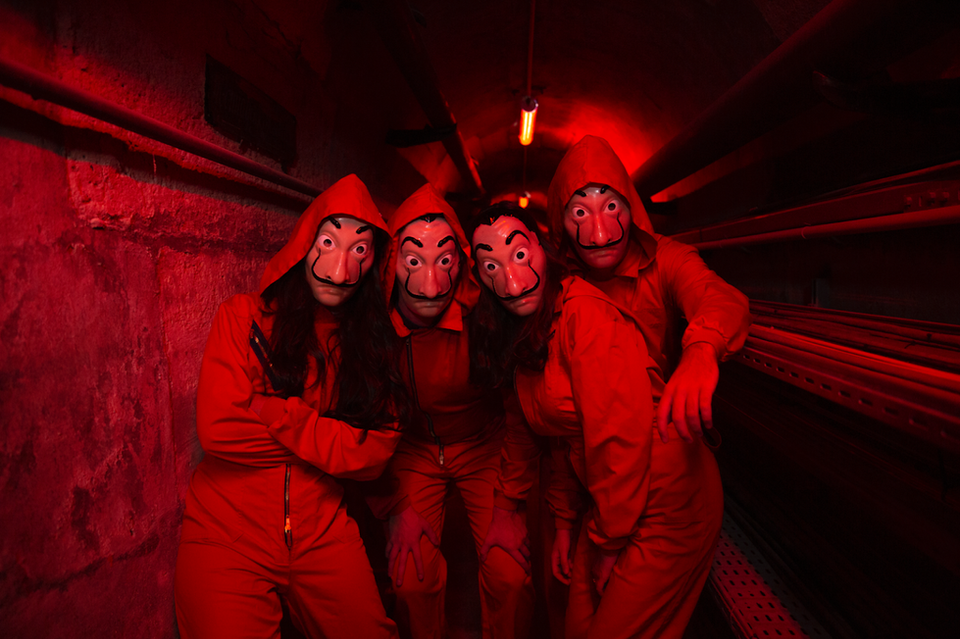We’ve all heard of Digital Out Of Home (DOOH) advertising, but there’s a new kid on the block and it’s taking the advertising world by storm. Introducing Fake Out Of Home (FOOH).
Natasha Mortimer, Managing Creative Director at Imagineerium, explores whether FOOH is a brand experience friend or foe, and how experience designers can take inspiration to push the boundaries of creativity.
Fake Out Of Home advertising, otherwise known as FOOH, is transcending traditional advertising norms to capture the imagination of both designers and consumers alike. FOOH has the power to turn the mundane into the extraordinary. By blending artistry, technology, and psychology, it redefines the way we perceive and engage with outdoor advertisements.
You may have seen the recent videos making their way around social media, from Maybelline mascara wands on the London Underground to a gigantic Barbie breaking out of the box in Dubai. FOOH is exciting. It’s breaking the boundaries of possibility.
However, amid all this excitement, it’s crucial not to lose sight of the power of authentic brand experiences and those who are striving to deliver REAL life experiences that captivate audiences and leave a lasting impression.
Here are six lessons we can take from the world of FOOH to apply in our own experience designs.
1. Pioneer Authenticity
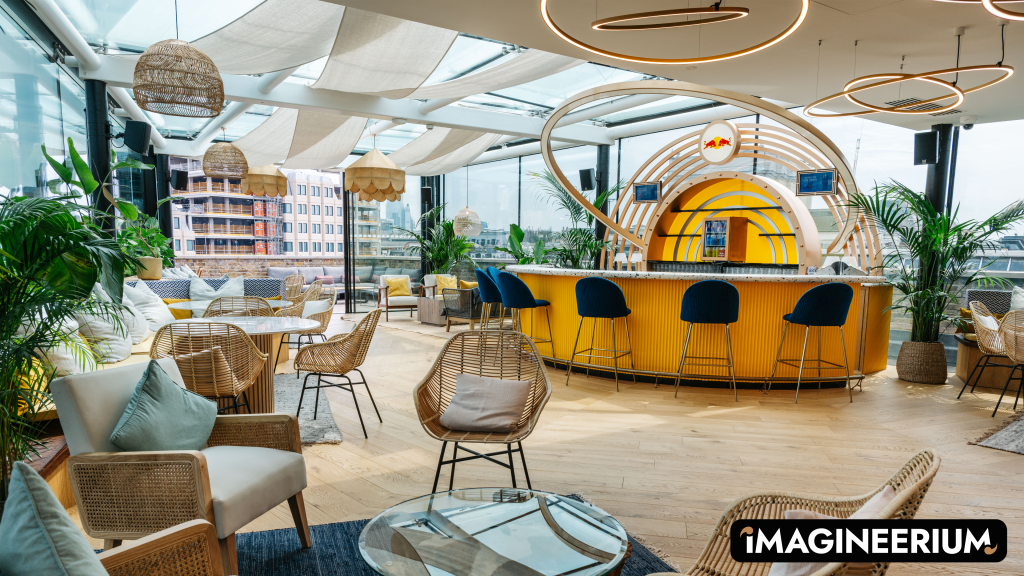
FOOH advertising provides exciting tools to tell a brand’s story in innovative ways – but the story itself, the core message, should always ring true. This means understanding the brand’s values, mission and identity and ensuring that every campaign aligns seamlessly with these principles.
At Imagineerium, we strive to create experiences that are not just visually stunning, but also deeply connected to the essence of the brand. It’s important that what you deliver always resonates with the brand itself – however out there is it! An audience is more likely to engage with it if it feels familiar in some way, however bonkers the idea may be.
A project that we loved working on this year was to design and deliver the Sun Bar, a rooftop bar at Red Bull HQ in Covent Garden. The design was a true reflection of Red Bull’s brand spirit – dynamic, energetic, and adventurous. Our design incorporated bold blue and yellow accents, echoing the iconic Red Bull colours. From the sleek, modern furniture to the striking lighting installations, we created an interior that exuded the feeling of being on top of the world. The 360-degree panoramic view certainly helped! It was a super-fun journey to translate these qualities into the physical space, ensuring that every visitor to the rooftop bar experienced the essence of Red Bull’s identity.
2. Harness The Power of Surprise
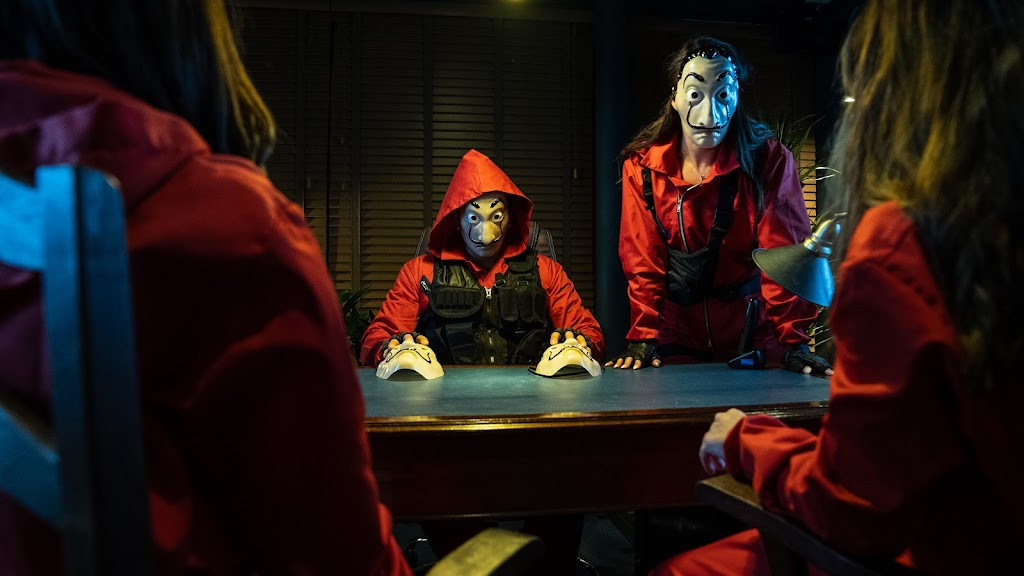
Surprise isn’t just a fleeting moment: it’s what drives engagement. FOOH campaigns that introduce unexpected twists or unconventional visuals often become topics of conversation. Much like an experiential campaign or installation, the success of FOOH campaigns hinge on their ability to surprise and captivate audiences.
It’s important to seek ways to introduce unexpected elements into designs. Surprise keeps audiences engaged and sparks conversations, increasing the likelihood that it will leave a lasting impression.
When we designed Money Heist the Experience, we went to great lengths to craft an immersive journey that mirrored the suspense and intrigue of the iconic series. Every detail, nook and cranny was designed to create an atmosphere of mystery and excitement. One of our key design principles was to ensure that the exit into the next space was not immediately obvious.
We incorporated intricate elements that challenged participants’ problem-solving skills. Some spaces featured multiple doors, leading to a sense of uncertainty and decision-making reminiscent of the heist scenarios portrayed in the show. Others were concealed cleverly, resembling hidden bookcases or seamlessly integrated into the walls, offering an element of surprise.
3. Create Immersive Narratives
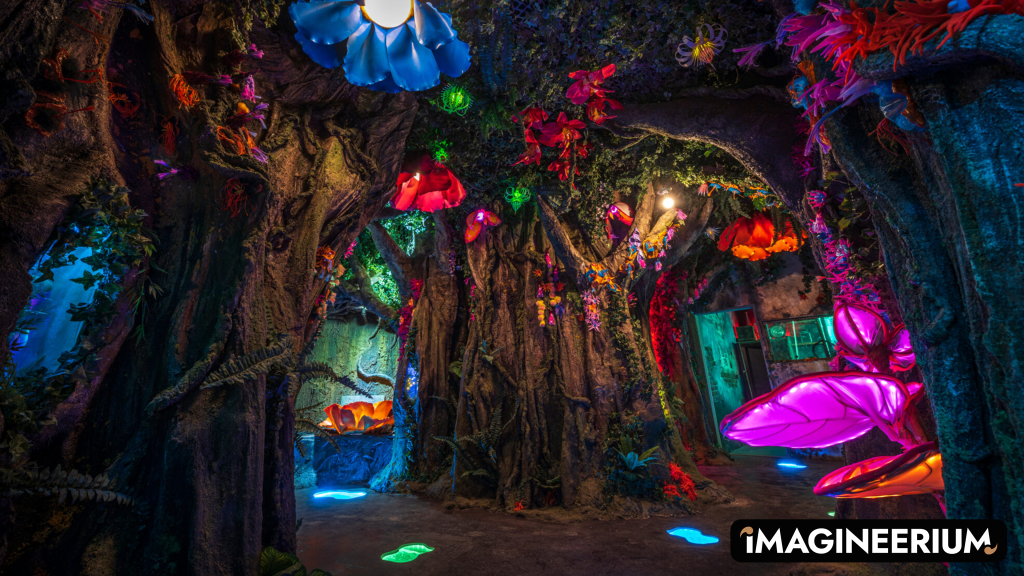
FOOH advertising is not just about conveying a message; it’s also about crafting an entire world for the audience to step into. This world is intricately woven through storytelling techniques helping to draw the viewer in.
Experience designers aspire to do more than just communicate – they aim to transport audiences into a narrative, forging a deep and emotive connection with the brand. In this synergy of creativity and emotion, FOOH advertising offers a powerful lesson for all experience designers: storytelling isn’t just a medium, it’s the magic that transforms messages into unforgettable experiences.
Storytelling is the baseline of our design work, it’s what brings together our concept and invites the viewer to get lost into the mix of emotion and imagination we’ve created. FOOH advertising shows the incredible potential of storytelling in design: one which has the ability to go further than ever before.
We were recently commissioned by Wake The Tiger, dubbed the world’s first ‘Amazement’ park, to design and create the ‘Elder forest’. This allowed us to merge technology and creativity, unlocking the potential of the ‘Elder Forest’ as a unique and otherworldly experience for visitors.
The ‘Elder Forest’ transported visitors into a realm where nature, fantasy, innovation and science coexist. The ‘Elder Forest’ narrative was that it was being tested on by the lab that it sits next to, the idea being that it might find solutions to the world’s problems, aiming to inspire people to find solutions to our real world’s problems.
We breathed life into the Elder Forest space, infusing it with small world portals, illuminated plants, and interactive wonders. We brought in talented carpenters, sculptors, scenics and lighting designers to help bring our Elder Forest vision to fruition. It was an honour to contribute to Wake The Tiger’s mission to inspire awe and wonder in all who ventured through the experience.
4. Integrate Cutting-Edge Technology
Technology is a linchpin of FOOH advertising. Without it, well, it wouldn’t be today’s buzzword. We’re seeing a rise in extended reality opportunities – viewers are understanding its process, which is further increasing its demand. Due to this rise, it’s important for experience designers to stay on the pulse of cutting-edge technology trends. Whether it’s AR, AI, VR or other innovations, technology can help to elevate experiences, making them more interactive and memorable.
These new technologies are opening the door to a new world of possibilities. As experience designers, we can integrate things like AR into our projects, but also more subtle technologies like motion sensors, spatial audio and projection mapping to bring our experiences to life even more.
5. Consider Context and Location
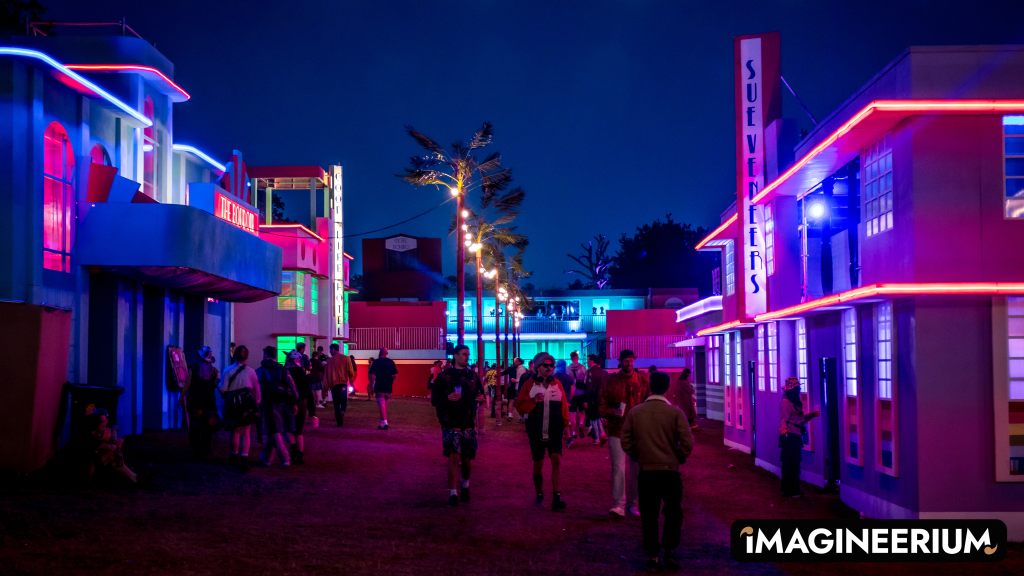
In both FOOH advertising and immersive experiences, the surroundings can greatly impact how the audience perceives and engages with the content. A well-placed campaign or experience that takes into account its context not only feels more relevant but also resonates more deeply with the audience.
Understanding the environment you are working with and adapting it to fit the message is vital. It’s important to read the space you’re going to use and see how you can use it to your advantage, whether it’s indoors or outdoors, an enclosed space or somewhere with square footage. The size, shape, location of your space will all have an impact on the experience you are trying to create.
A good example of this is the set build we did for El Dorado Festival in 2022. We were briefed a certain amount of space and needed to create a ‘mini Vice city’ within that limited footprint. What was once a blank canvas became a bustling ‘mini city’ that transported festival-goers into a world of wonder. We created six venue facades including Motel Dorado, Blue Tit Salon, Good Life Hotel, The Diner, The Boudoir and Sue Veneers.
Throughout the creative process, we considered how festival-goers would engage with these spaces. It was a dynamic blend of form and function, where every element needed to be as visually captivating as it was structurally sound. Although we’re used to working on outdoor builds, the main challenge with this project was the terrain of the site lines. It was set on a steep hill which added a lot of character to the overall appearance of the design, but it meant we had to take the uneven level into consideration throughout the entire design process.
We bought a detailed contour map of the site to work from so we could plan for it accurately with no room for error! We built each of the venues meticulously so that each would fit in a coherent landscape. To mitigate the steepness of the site lines we built each one so that they either protruded or were slightly set back so none of the venues were hidden from view. We also built the complete construction 3D ensuring the escapism would not be ruined by 2D flat facades.
The ‘Mini City’ became not just a backdrop but an essential part of the El Dorado Festival experience. Festival-goers roamed the streets, interacted with the buildings, and created their own stories within this imaginative world.
6. Leverage The Power Of Social Media
FOOH campaigns often go viral, and for good reason. They have the ability to shock, excite and confuse – “did I really just see that?” By leveraging social media platforms, experience designers can amplify the reach and impact of an experience tenfold. Experience designers can draw inspiration from FOOH’s viral potential to help create shareable moments.
These days, social media is a hub of creative content, shared between friends. If you can create an experience that has the shareability factor, it will transcend the physical space and become a digital sensation. Your audience becomes your advocates, spreading your message far and wide, and that’s where the true magic of immersive experiences lies.
In the evolving landscape of advertising and experience design, FOOH is a captivating newcomer. Yet, it should always be harnessed as a tool to enhance, rather than replace, the authenticity and trust that authentic brand experiences bring to the table. As the worlds of advertising and experience design continue to evolve, FOOH serves as a testament to the enduring power of creativity, authenticity, and innovation in capturing the hearts and minds of audiences.
We worked with Clarks Originals for Paris Fashion week to deliver a ‘pop up’ showroom experience that brought together the worlds of fashion, art, and design. Our task was to create a two-story showroom that not only showcased Clarks Originals’ iconic footwear but also transformed into an artistic and Instagram-worthy space.
During the event there were influencers and performance artists to curate special pieces that added a dynamic and captivating dimension. It also featured London fashion designer and artist, Stain Shade who added a unique and artistic dimension. Stain Shade used his creative talents to paint Clark Originals footwear, transforming them into one-of-a-kind pieces of wearable art.
Every corner of the showroom was designed with precision, ensuring that it radiated modern, on-brand aesthetics and provided the perfect backdrop for poses, photos, and videos throughout the event. If you come up with an original concept, and create something out of the ordinary, audiences will no doubt want to share it with their friends and followers.
To get more insights from experts in the Experience Economy, attend digital and IRL events, and access our exclusive online community, apply to join the WXO now.

